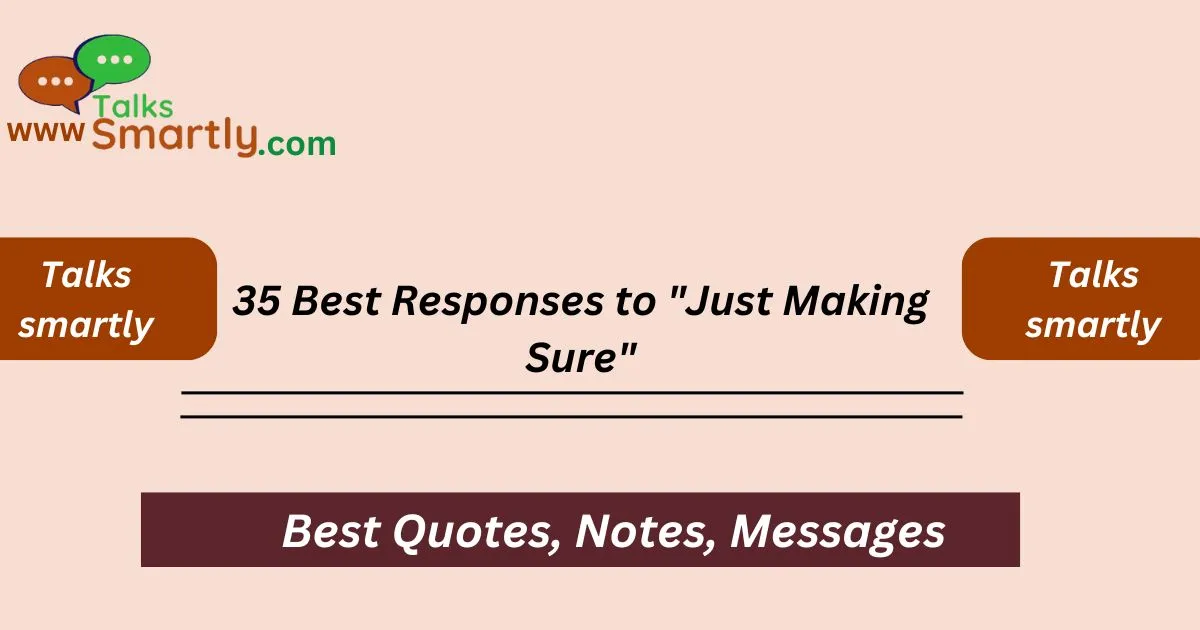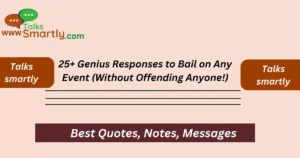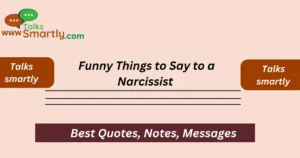“Explore effective and friendly responses to the phrase “Just making sure.”
When someone says, “Just making sure,” it often indicates their desire for clarity or reassurance. Whether it’s in a personal conversation, a professional setting, or a casual chat, this phrase can arise in various contexts. It may relate to plans, decisions, or even feelings, and how you respond can shape the course of the interaction.
Understanding how to respond to this phrase can help foster communication and strengthen relationships. By providing clear, positive, and sometimes humorous replies, you can show that you appreciate their diligence while also making the conversation more engaging.
In this post, we’ll explore 35 best responses to “Just making sure” that you can use in different situations. Let’s dive into these responses and enhance your conversational skills!
35 Best Responses to “Just Making Sure”
- “Absolutely! Your attention to detail is appreciated.”
- “Thanks for checking! Everything is on track.”
- “No worries! I’m glad you’re being diligent.”
- “Of course! Just let me know if you need more info.”
- “I appreciate your caution; it helps us stay organized.”
- “Great to hear from you! Everything is set.”
- “Thanks for looking out! What’s on your mind?”
- “For sure! Let’s make sure we’re aligned.”
- “Absolutely, better safe than sorry!”
- “I understand; it’s good to verify things.”
- “Thanks for following up! I value your input.”
- “I’m happy you asked! Let’s clarify everything.”
- “Great point! What would you like to confirm?”
- “I’m glad you’re checking in! Let’s go over it.”
- “No problem! I love your thoroughness.”
- “Thanks for making sure; it shows you care.”
- “I appreciate your diligence! What can I clarify?”
- “Of course! It’s smart to double-check.”
- “Thanks for being proactive! Let’s review the details.”
- “I’m happy to confirm everything; what’s your concern?”
- “Absolutely! It’s good to have a second look.”
- “Great to reconnect! Everything is going smoothly.”
- “Thanks for your follow-up! It keeps us on track.”
- “I’m here to help! What do you need to know?”
- “Absolutely! Let’s ensure everything is in order.”
- “Thanks for being thorough! I appreciate it.”
- “I’m glad you checked! Everything is set.”
- “No worries! I’m always happy to clarify.”
- “Great idea! Let’s double-check the details.”
- “Thanks for your diligence; it really helps!”
- “For sure! Let’s confirm everything together.”
- “Absolutely! I wouldn’t want you to feel uncertain.”
- “Thanks for making sure! It’s better to confirm.”
- “I appreciate your follow-up! Let’s go over it.”
- “Of course! Let’s make sure we’re on the same page.”
1. “Absolutely! I appreciate your attention to detail.”
This response shows you value their thoroughness.
Example: “Absolutely! I appreciate your attention to detail; it really helps!”
2. “Thanks for checking in! Everything is on track.”
Reassurance can help ease their concern.
Example: “Thanks for checking in! Everything is on track for our meeting.”
3. “I’m glad you’re being diligent! What’s your concern?”

This invites further discussion and shows you’re open to dialogue.
Example: “I’m glad you’re being diligent! What’s your concern about the project?”
4. “Of course! Just let me know if you need any more info.”
Offering assistance demonstrates your willingness to help.
Example: “Of course! Just let me know if you need any more info about the plan.”
5. “No problem! I always appreciate a second look.”
This acknowledges their efforts while keeping the conversation light.
Example: “No problem! I always appreciate a second look; it keeps us on track!”
6. “Thanks for making sure! It shows you care.”
Recognizing their concern can help strengthen your bond.
Example: “Thanks for making sure! It shows you care about the outcome.”
7. “I understand; it’s always good to double-check!”
This validates their feelings and promotes understanding.
Example: “I understand; it’s always good to double-check before moving forward!”
8. “You’re right to be cautious! What can I clarify for you?”
Encouraging questions shows you’re open to dialogue.
Example: “You’re right to be cautious! What can I clarify for you about the details?”
9. “Great to hear from you! Everything is set.”
A warm greeting can make the interaction more friendly.
Example: “Great to hear from you! Everything is set for tomorrow.”
10. “Thanks for looking out! Is there anything specific on your mind?”
This encourages them to express their concerns directly.
Example: “Thanks for looking out! Is there anything specific on your mind regarding the plans?”
11. “I appreciate your thoroughness! Let’s review the details.”
Acknowledging their thoroughness can make them feel valued.
Example: “I appreciate your thoroughness! Let’s review the details together.”
12. “No worries, I’m always happy to clarify!”
Expressing your willingness to help can ease any tension.
Example: “No worries, I’m always happy to clarify any doubts you have!”
13. “For sure! What part do you want to double-check?”
This encourages further dialogue about specific concerns.
Example: “For sure! What part do you want to double-check about our meeting?”
14. “Thank you for being cautious! I’ve got everything covered.”
Reassuring them can alleviate their concerns.
Example: “Thank you for being cautious! I’ve got everything covered for the event.”
15. “Absolutely, better safe than sorry!”
This phrase can reinforce a shared value of caution.
Example: “Absolutely, better safe than sorry when it comes to plans!”
16. “I understand where you’re coming from; it’s good to verify.”
This validates their feelings and promotes open conversation.
Example: “I understand where you’re coming from; it’s good to verify everything.”
17. “No problem! I love your attention to detail.”
Complimenting their thoroughness can encourage positivity.
Example: “No problem! I love your attention to detail in our discussions.”
18. “I’m glad you checked! Everything is going smoothly.”
This reassures them that things are in order.
Example: “I’m glad you checked! Everything is going smoothly with the project.”
19. “Great point! Let’s make sure we’re on the same page.”
This emphasizes teamwork and collaboration.
Example: “Great point! Let’s make sure we’re on the same page before the presentation.”
20. “Thanks for being proactive! What would you like to confirm?”
Encouraging questions allows for clear communication.
Example: “Thanks for being proactive! What would you like to confirm before we proceed?”
21. “Of course! It’s always smart to verify.”
Acknowledging their caution shows respect for their diligence.
Example: “Of course! It’s always smart to verify plans before finalizing them.”
22. “I’m happy you asked! Let’s go over it together.”
Offering to review details together can strengthen the relationship.
Example: “I’m happy you asked! Let’s go over it together for clarity.”
23. “Absolutely! I wouldn’t want you to feel uncertain.”
This shows empathy and care for their feelings.
Example: “Absolutely! I wouldn’t want you to feel uncertain about our arrangements.”
24. “I appreciate your follow-up! It keeps us organized.”
Acknowledging their efforts promotes a positive atmosphere.
Example: “I appreciate your follow-up! It keeps us organized and on track.”
25. “No problem at all! I’m here to help.”
Expressing your willingness to assist encourages open communication.
Example: “No problem at all! I’m here to help with any questions you have.”
26. “Great to hear from you! Let’s ensure everything is in order.”
This promotes a collaborative approach to verifying information.
Example: “Great to hear from you! Let’s ensure everything is in order for our meeting.”
27. “Thanks for being thorough! Do you have any specific concerns?”
Inviting them to express their concerns can deepen the conversation.
Example: “Thanks for being thorough! Do you have any specific concerns we should address?”
28. “I’m glad you’re checking in! Let’s clarify everything.”
Encouraging clarification shows openness to dialogue.
Example: “I’m glad you’re checking in! Let’s clarify everything before moving forward.”
29. “Absolutely, it’s always good to double-check things!”

This reinforces a shared value of caution.
Example: “Absolutely, it’s always good to double-check things to avoid misunderstandings!”
30. “Thanks for making sure! It’s always better to confirm.”
This emphasizes the importance of verification.
Example: “Thanks for making sure! It’s always better to confirm plans in advance.”
31. “I appreciate your diligence! What can I help clarify?”
Encouraging questions helps ensure mutual understanding.
Example: “I appreciate your diligence! What can I help clarify regarding the project timeline?”
32. “Great idea! Let’s double-check the details.”
Encouraging teamwork fosters collaboration.
Example: “Great idea! Let’s double-check the details to ensure everything is accurate.”
33. “Thanks for following up! I value your input.”
This response highlights the importance of their contributions.
Example: “Thanks for following up! I value your input on this matter.”
34. “I’m happy you asked! What do you need confirmation on?”
This invites them to share specific concerns.
Example: “I’m happy you asked! What do you need confirmation on regarding the meeting?”
35. “Of course! Let’s ensure everything is as it should be.”
This emphasizes a shared goal of clarity and organization.
Example: “Of course! Let’s ensure everything is as it should be before proceeding.”
ANSWER TO KEY QUESTION
1. What does “Just making sure” usually imply?
It indicates someone is seeking confirmation or clarity about a situation.
2. How should I respond if I feel offended by this phrase?
Stay calm and respond politely; you can ask for clarification if needed.
3. Is it important to acknowledge their concern?
Yes, recognizing their concern fosters a positive communication environment.
4. How can I ensure effective communication when responding?
Use clear, concise, and friendly language to enhance understanding.
5. What if I genuinely don’t have an answer?
Be honest and offer to find the information they need.
Conclusion
Responding to “Just making sure” can significantly impact your conversations. By using friendly and effective responses, you can clarify any uncertainties while promoting a positive and engaging dialogue. This approach not only reassures the other person but also fosters a sense of collaboration and understanding.
Whether in a professional setting or casual interactions, these responses can help you navigate conversations smoothly. Remember, effective communication is about showing empathy and willingness to clarify, making your interactions more meaningful.
So the next time someone checks in with you, use these responses to strengthen your relationship and ensure everyone is on the same page.











